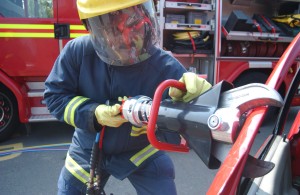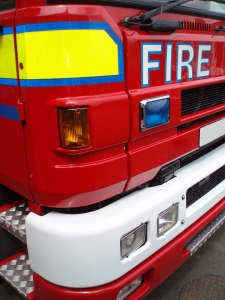The term neoliberalism was coined back in the 1930s, fell from common currency in the 1960s and has made a dramatic return in more recent years. Its trajectory is not entirely different, therefore, to big band music provided that you count Jools Holland’s Rhythm & Blues Orchestra as a resurgence of the form. It describes the paradigm of governance in much of the developed world, including in the UK, and refers to the tendency towards privatisation, deregulation, free trade and a capitalist framework in which economies are driven by the market with minimal government interference. Despite miscellaneous free market crises, it has emerged unscathed as the political doctrine of choice and as unshakeable as a banker’s bonus.
Its effects are obvious whether it’s the recent sell-off of Royal Mail, the sale of the Fire Service College to Capita or the deregulation of the banks with the consequences we all know about. These are but a few of the ways in which successive government policy has impacted on the way that we live our lives, or what we might describe as the socio-economic consequences of the neoliberal monoculture. It would be true to say that it has had a profound effect on our Fire and Rescue Services and continues to do so and, in fact, 2014 has the potential to be at least the start of a radical realignment of the FRSs.

Cutters
This is thankfully not intended to be a history lesson and so we shall leave vivid descriptions of the sucking worm engine [yes it really did exist], Green Goddesses and even the Fire and Rescue Act 2004 to the pages of Wikipedia. We do start, however, in 2005 with the then Labour administration’s National Procurement Strategy for the FRSs which was largely ignored by Local Authorities and which ably demonstrates national government’s inability to impose national policy upon local government. The Coalition government allowed the Strategy to wither on the vine in a ‘Yes Minister’ sort of way, not rescinding the still active policy but certainly not supporting it either before eventually consigning the body set up to run it to the bonfire of the quangos and appointing administration of the resulting Frameworks to a private company.
This financial autonomy of the individual FRSs was reinforced in an operational sense by the 2004 Act [whoops, I wasn’t going to mention that] which assigned responsibility to each FRS to deliver services appropriate to local need and hence the arrival of the Integrated Risk Management Plan.
When the current coalition government came to power in May 2010, we were bombarded with a number of sound-bites that included ‘the big society’, ‘we’re all in this together’ and ‘localism’, only the latter of which has proved to have any real basis in government policy but it is a very important one given its impact on Fire and Rescue Services. This devolvement in decision-making from central to local government is something of a master-stroke strategically because if you’re cutting dramatically financial support to local authorities, what better than to wield the axe at source, leaving the Councils to make the difficult decisions about which services to curtail and, of course, to take the blame for it all. A further cause for trebles all round at Number 10 is that you don’t even have to deliver the cuts proportionally but decide which local authorities are to be effectively ring-fenced and which are to be hammered into the ground. Treatment of the Fire and Rescue Authorities is a key example of this as in the first year of the cuts 2012/13, Hampshire, Cheshire and Dorset were actually awarded small increases while most Authorities saw reductions of between 2-12% with the worst affected including Shropshire, South Yorkshire, Cleveland, Merseyside, Greater Manchester, West Yorkshire, Derbyshire and Humberside.
Ask pretty well anyone in our industry and they will point to a hands-off approach by this government in respect of fire safety policy and legislation and we might argue that this non-interventionist stance is in itself a policy. Indeed it surely is and we can quite readily relate what we have said already and what will follow as part of a neoliberal agenda, and it is no coincidence that the Department of Communities and Local Government is the most trimmed-back government department because it has so much less to do than it used to.
The ‘Fire Futures’ report was prepared by the sector and published late in 2010, featuring a host of recommendations that were considered by the then Fire Minister, Bob Neill. DCLG’s response in April the following year discounted a handful of the recommendations then categorised the others into those that the sector itself may carry forward, those where the sector would be supported by government and those where government would act to ‘free the sector’. It is indicative of the arms-length approach of DCLG that they identified 22 ways in which they may unleash the sector, just 7 actions in which they may participate [but not lead] and a hefty 113 points that were handed back to the sector to progress as they see fit. The four Working Groups that contributed to ‘Fire Futures’ effectively coalesced into one, took FOBFO along with it and became the Fire Sector Federation in the middle of 2012.
This ‘power to the people’ as John Lennon and Wolfie Smith would have it [or ‘power to all our friends’ if you prefer Cliff Richard’s more laid-back tones] appears to be a good thing but there are difficulties here from both a fire safety and a Fire and Rescue perspective. The Fire Sector Federation has carried out some outstanding work but it is not government nor is it a government body and, as a result, has no legislative or regulatory jurisdiction. The problem with the FRSs is less that they cannot implement change but that they are principalities that function largely independently from each other and are therefore perpetually divergent, thereby proving the second law of thermodynamics that entropy [i.e. disorder] increases in a spontaneous change. Other examples would include the expansion of the universe and the fact that it was much harder to get carbon dioxide into a fire extinguisher than it is to discharge it while taking part in the office chair on wheels rally [don’t try this at home or indeed the office for that matter]. This individuality of the FRSs is a real problem both to the premises owner who may not be sure how their local FRS will respond to an automatic fire alarm and will find it will differ for branches of their business in different parts of the country and to suppliers to the Fire and Rescue sector who, for example, will have to spray paint the fire engine a different shade of red depending on who is buying it.
Fire and Rescue suppliers continue to operate in market conditions that are subject to an increasingly divergent and complex narrative and it is easy to understand the magnitude of the purely technical issues alone when taking the above example and multiplying it across a wide range of products and their specifications. We may add to this positive entropy the ever-growing and sometimes competing Framework contracts where supposed mini-contracts or call-offs from the Frameworks, far from being the simple processes that they were intended to be, simply act as a starting point for a full re-visitation of the terms and conditions of the original Framework. Then we have the evaluation of fire-fighting equipment by a multitude of FRSs at significant cost to both the manufacturer and each of the Services involved and certainly in need of rationalisation. As Edward de Bono [no relation to the U2 singer] has said, ‘dealing with complexity is an inefficient and unnecessary waste of time, attention and mental energy’ and I often ponder this myself when attempting to set the TV recorder.
If hope springs eternal, even the most impervious pessimist might concede that in the field of Fire and Rescue, there are signs of a more concerted and rational approach to their collective operations, albeit that it appears to be driven by pecuniary considerations as opposed to some mass psychogenic epiphany. As a pessimist myself or, as I prefer to call it, an informed optimist, even I am looking to 2014 as a year of purification where real progress can be made on several fronts. Much depends on the implementation of some of the discussion points featured in Sir Ken Knight’s ‘Facing The Future’ report [Sir Ken himself distanced himself from referring to them as recommendations] and there were indeed calls for greater collaboration within the FRSs, including on procurement and product evaluations, and more widely between the ‘blue light’ services. At the time of writing, we await government’s own significantly delayed response which will fall somewhere on a scale that goes from a strictly hands-off stance to a regulatory iron fist and while no-one is going to be placing any bets on the latter, a degree of proactive encouragement is possible and, in my view, welcome.
Already, we have seen DCLG commissioning PA Consulting to gather data on FRS procurement and strong interest from CFOA in progressing FIRESA Council’s proposal to develop at least a regional product evaluation regime. The runes, tea leaves, extrapolation methodology [there are, of course, two types of people, those that can extrapolate and…] or other predictive techniques seem to point to some measure of regionalisation within the FRSs and moves to attain some form of collaboration between the FRSs, ambulance and the police.
What we have, therefore, is a fragmented picture which looks a bit like Picasso’s Guernica but which we hope will turn out more like a Mark Rothko canvas if hopefully somewhat easier to comprehend and a bit less boring. In an earlier blog, our CEO, Graham Ellicott, referred to green shoots in the fire sector in an economic sense and I think the same is true of change in the Fire and Rescue sector to the extent that this year really has the potential to define a new direction of travel among our FRSs. We can only trust that the green shoots that we see emerging may eventually blossom and do not turn out to be bindweed or similarly strangulating foliage that simply acts to smother some initial good ideas and good intentions.
By Dave Smith, FIA FIRESA Secretary
Tags: CFOA, DCLG, Fire and Rescue Act 2004, Fire Rescue Service, Fire Sector Federation, fire service college, Local Authorites, National Procurement Strategy, neoliberalism, Royal Mail
 This blog represents something of a departure from my usual style, or lack of, owing to this being written originally as a web news item. Rather helpfully, therefore, it begins with the matter in hand, sticks to the point and ends very much on the same topic. And so a more conventional approach but I have at least managed to give it one of my typically unfathomable titles, on the subject of which, there is something that links all of my blog titles…anyone know what it is?
This blog represents something of a departure from my usual style, or lack of, owing to this being written originally as a web news item. Rather helpfully, therefore, it begins with the matter in hand, sticks to the point and ends very much on the same topic. And so a more conventional approach but I have at least managed to give it one of my typically unfathomable titles, on the subject of which, there is something that links all of my blog titles…anyone know what it is?





 Sir Ken Knight’s recently-published report, ‘Facing The Future’ is, as we speak, being digested by a range of organisations including central and local government; CFOA (
Sir Ken Knight’s recently-published report, ‘Facing The Future’ is, as we speak, being digested by a range of organisations including central and local government; CFOA (




